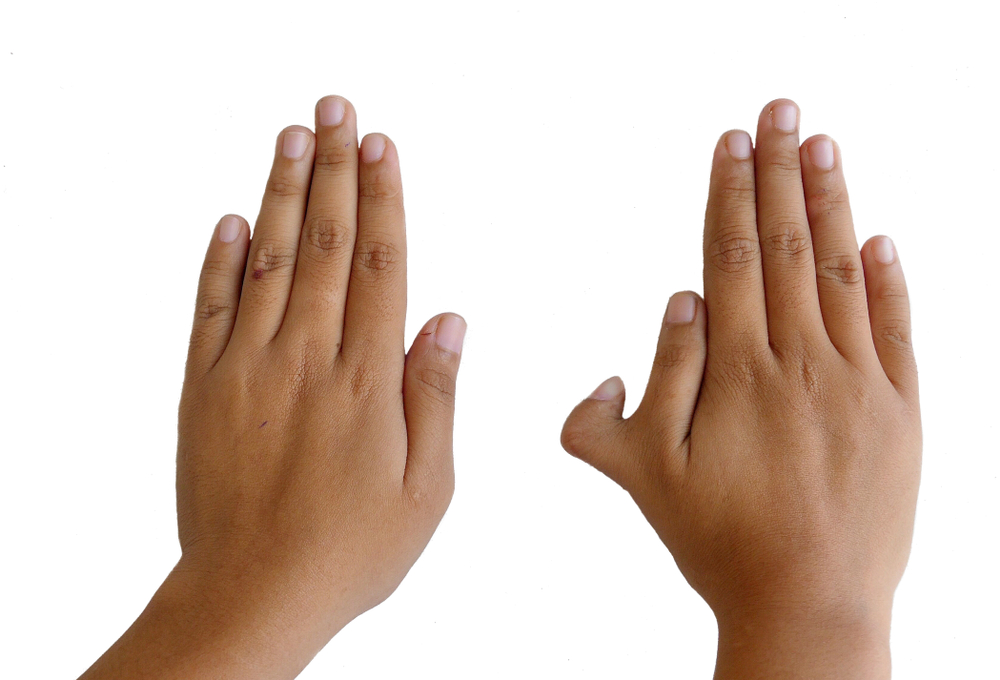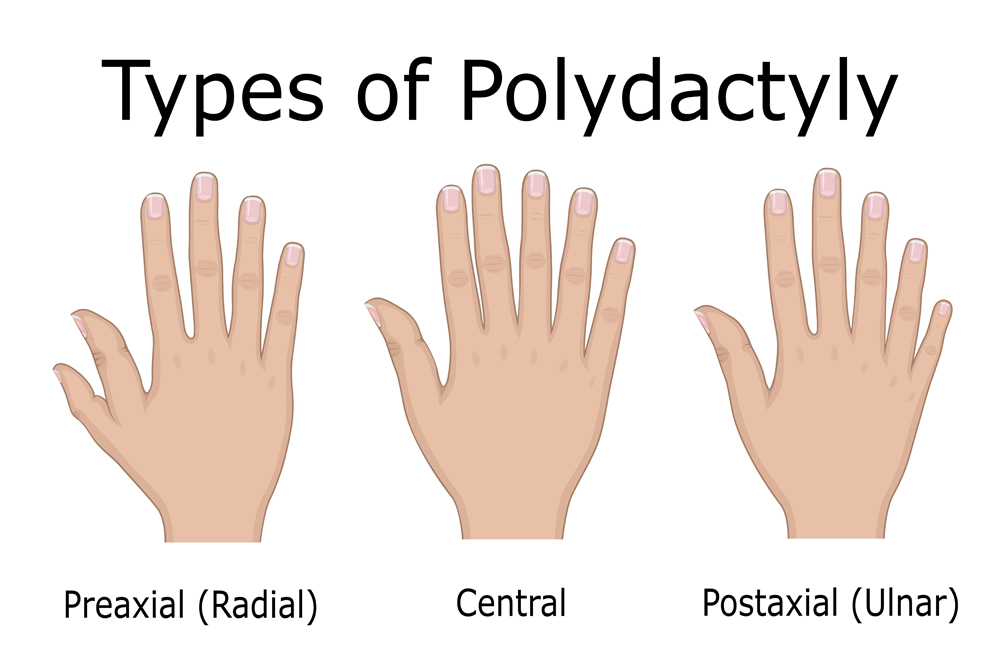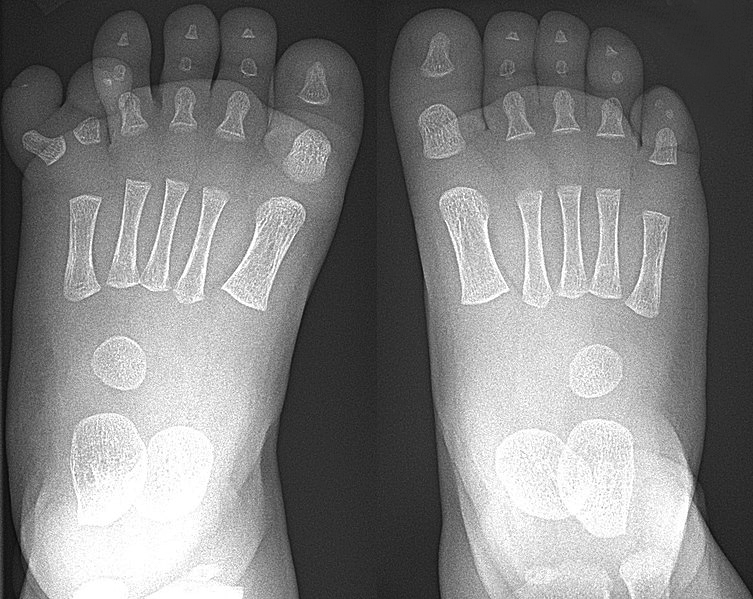Some people have more than five fingers on each hand, a condition called polydactyly. Some people think this condition is lucky, because it is linked to gods with six fingers. Some research has shown that an extra finger can provide advantages to individuals, like better coordination. Polydactyly is not limited to humans – aye-aye lemurs and giant pandas also have an extra thumb. The brain of individuals with an extra finger has a specific dedicated region that controls the activity of the extra finger.
1 in roughly 500-1,000 children have more than five fingers on each hand. This condition, called polydactyly, has been at the center of several superstitions.
One of the ancient myths in South America concerns the Ugha Mongulala tribe of the Amazon jungle, often considered as people “chosen by the Gods”. It was said that gods with 6 fingers used to visit them, linking the scenario of having 6 fingers to divinity.
While for most of us today, polydactyly is nothing but a rare trait, recent research has shown that a completely developed and functional sixth finger can provide several advantages to individuals.

What Is Polydactyly?
In medical terms, the phenomenon of having 6 fingers is known as polydactyly and was coined in 1670 by Theodore Kerckring. “Poly” means many and “dactylos” means digits or fingers, and the extra finger is referred to as a “supernumerary digit”.
There are three main types of polydactyly.
Polydactyly Types
If an individual has two thumbs, they are said to have “radial polydactyly“, as “radius” is the name of the bone that supports the thumb side of our hand. It is also called “preaxial polydactyly”, as the extra finger is nearer to the first finger (thumb).
If an individual has two little fingers, they are said to have “ulnar polydactyly“, as “ulna” is the name of the bone that supports the little finger side of the hand. This condition is also called “postaxial polydactyly”, as the extra finger is nearer to the last finger (little finger).
If a person’s extra finger is a copy of any of the three other fingers, they are said to have “central polydactyly“.

What Causes 6 Fingers In Hand?
Extra digits can occur sporadically in nature, and may be caused by environmental factors such as nutrient intake level, exposure to hazardous chemicals before pregnancy, and a history of epilepsy.
Hereditary genetics is also a cause of polydactyly. A group of genes called the homeobox or Hox genes determines the body plan of the embryo, namely where the head and tail should grow. They ensure that structures grow in their intended locations in the body.
Research has found that certain hox genes are a cause of genetic polydactyly.
HOXA13 and HOXD13, in particular, are important for digit formation. These proteins have polyalanine tails in their structure. Mutations like addition or deletion in the polyalanine tails of these proteins result in malformations in digit formation, one of which is polydactyly.
Early tetrapods had more than 5 fingers on their hands. The evolution of these genes may be responsible for the transition from polydactyl ancestors to 5-fingered (pentadactyl) humans and 4-fingered (tetradactyl) animals.
Mutations in several other genes, such as SHH (Sonic Hedgehog) genes, IHH (Indian Hedgehog) genes, and the LMBR1 (limb development membrane protein) gene, which play a role in body development and cell communication, also affect the number of fingers we may have.
Can Having 6 Fingers Make You More Dexterous?
In 2019, researchers from the University of Freiburg published a paper in which they analyzed two subjects with an additional finger between the thumb and index finger on both hands. The study emphasized which abilities the additional finger can confer to the subjects when performing several tasks.
The study garnered some interesting observations. First, the extra finger was able to move independently of the other fingers, as it had its own bones, ligaments and tendons. This is very rare, as the extra finger is usually undeveloped or underdeveloped. Second, it was able to coordinate its actions with the other fingers, meaning that the extra finger could move as the other five fingers moved and coordinate with them to facilitate complex movements.
In most cases of polydactyly, the extra finger is just a lump of tissue without bones, ligaments or tendons, making it unable to move independently. The extra finger can only be functional when it is fully developed, with bones, tendons and ligaments.
If the extra finger lies between the thumb and index finger, it can contribute to improved coordination with the other 5 fingers.
Such subjects had versatile manipulation skills. The extra finger enabled them to complete certain tasks with just one hand that would otherwise require both hands, such as tying their shoelaces, managing mobile phone operations, playing complex video games, and efficient typing.
However, previous research has shown that this only applies to individuals with a fully developed extra finger between the thumb and index finger.

Also Read: How Do Fingers Work If They Don’t Contain Muscles?
Is Polydactylism Observed In Animals?
Polydactyly is not limited to humans. Aye-Aye lemurs, a small primate, has an extra thumb (pseudo thumb) with bone and cartilage, which it uses when trying to acquire food. Furthermore, their pseudo-thumb, like human thumbs, can move in three different directions. Giant Pandas also seem to have a pseudo-thumb that helps them get a better grip on bamboo while eating.
The Brain And Extra Fingers
Our brain controls all the movements and processes regulating our body. Does that mean the extra finger will exert pressure on the brain for its smooth functioning?
The answer is a definite “no”. The brain is more than equipped to handle the activities of an extra finger without compromising its other activities. Not only that, but the brain of individuals with an extra finger has a specific dedicated region that controls the activity of the extra finger.
Also Read: Are Most Animals Also Right-handed Like Humans?
A Final Word
Our four-limbed ancestors, the tetrapods, had a varied number of fingers and toes, ranging from 5 to 13 on each limb. At the end of the Devonian period, when animals had moved from water to land, almost all creatures had only five digits, though some did have four.
We don’t know the exact reason why we have only 5 fingers instead of six. This could be because, as animals evolve, it is easier to lose a trait than to gain one. That could be the reason why having six fingers is still rare.
There is no solid evidence that the extra finger can be beneficial, except from the study mentioned above. Further research, perhaps with a greater number of participants, may provide better insights into the role of an extra finger in enhanced motor abilities.
For the time being, the limited evidence available suggests that having an extra finger may provide extra skills, provided the finger is fully developed.
Also Read: Why Aren’t Human Fingers All The Same Length?
How well do you understand the article above!

References (click to expand)
- Mehring, C., Akselrod, M., Bashford, L., Mace, M., Choi, H., Blüher, M., … Burdet, E. (2019, June 3). Augmented manipulation ability in humans with six-fingered hands. Nature Communications. Springer Science and Business Media LLC.
- Ahmed, H., Akbari, H., Emami, A., & Akbari, M. R. (2017, November). Genetic Overview of Syndactyly and Polydactyly. Plastic and Reconstructive Surgery - Global Open. Ovid Technologies (Wolters Kluwer Health).
- Umair, M., Ahmad, F., Bilal, M., Ahmad, W., & Alfadhel, M. (2018, November 6). Clinical Genetics of Polydactyly: An Updated Review. Frontiers in Genetics. Frontiers Media SA.
- Browning Jr., R., Hayes, E. G., & Lear, A. S. (2020, January 16). Spontaneous Appearance and Transmission of Polydactyly in Dexter Cattle. Case Reports in Veterinary Medicine. Hindawi Limited.
- Kherdjemil, Y., Lalonde, R. L., Sheth, R., Dumouchel, A., de Martino, G., Pineault, K. M., … Kmita, M. (2016, October 5). Evolution of Hoxa11 regulation in vertebrates is linked to the pentadactyl state. Nature. Springer Science and Business Media LLC.
- (2022) Polydactyly - StatPearls - NCBI Bookshelf. National Center for Biotechnology Information
